The fashion business never stops moving. As trends continue to change, brands and retailers need to stay at the forefront of these changes to remain successful and profitable.
To be successful as a brand means having an emotional connection with audiences to build loyalty and ultimately brand appeal which stands for a customer’s values. Delivering differentiated and personalised experiences to each shopper is the competitive and strategic differentiator that every fashion and apparel retailer wants to have. The COVID-19 pandemic has caused a shift in how the world perceives fashion, as brick-and-mortar stores were shut down (some never to re-open). This has had a profound impact on the fashion industry where confidence and trust in particular brands were governed by the process of visiting stores to feel the quality and fit of the articles. This was gone.
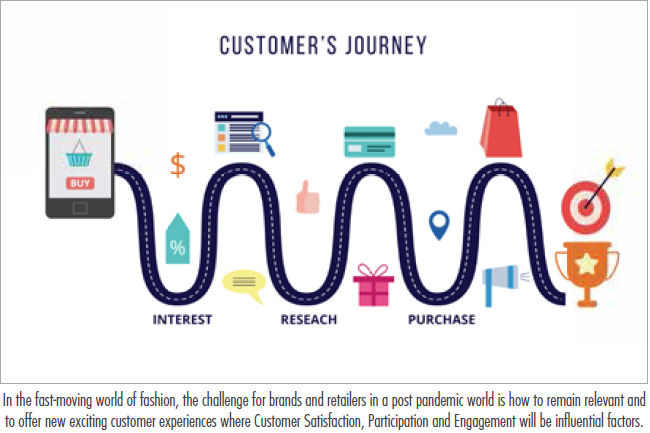
Yet a change was going on during the pandemic. It has accelerated the demand for buying via e-commerce, particularly in fashion, which in turn has enabled innovation, efficiency and new ways for businesses to scale up. The change is likely to be permanent and will continue to create opportunities to build operating models and differentiated propositions that are more personalised to each customer. Embracing e-commerce is now a digital prerogative especially when consumer expectations are higher than ever. With the explosion of new touchpoints – like more than 100 million smart speakers and virtual assistants in households around the globe – the approach that an online store was just an added channel, is no longer enough. Brands and retailers recognise that in order to remain relevant and successful, they need to provide consistent solutions to exploit the customer journey. Consumers now expect a full shopping experience. They want to communicate, engage and influence the brands from which they buy. This opens the door to several new opportunities for retailers to engage with their customers but all of these new ways require new and more sophisticated technology to be successful. As McKinsey points out in their recent report on ‘The State of Fashion 2021’, “Consumer behaviour has undoubtedly shifted over the past year, as people sheltered from the virus in their homes, travel was restricted and stores were closed around the world. However, as digital consumption continues its dominance and growth in 2021, companies must develop more engaging and social experiences to encourage consumers to connect. At the same time, we anticipate executive teams to increasingly focus on ensuring that digital channels add measurable value to the bottom line, given tight budgets and the need for productivity and efficiency.” In the fast-moving world of fashion, the challenge for brands and retailers in a post pandemic world is how to remain relevant and to offer new exciting customer experiences where Customer Satisfaction, Participation and Engagement will be influential factors. What we do know, is that in an increasingly mobile world, whoever can maintain or excel in these areas using the right technology, will hold the keys to success.
Driving Customer Satisfaction
1) The changing fashion customer
Against the backdrop of the pandemic, where visiting stores has not been possible, the fashion customer has changed behaviour, especially within millennials, who now prefer shopping online versus in-person. As a result, fashion brands and retailers have had to move quickly to keep abreast of the changing preferences of their customers. For this group, for whom technology is a common way of life, e-commerce is a preferred method of purchasing that personalises the shopping experience, and therefore customers can enjoy being able to achieve more without having to leave the comfort of their homes.
2) New ways of shopping
For the Millennials and Gen Zs, satisfaction is about how to get to wear products that they perhaps cannot afford, and they are fast subscribing to the new concept of borrowing and renting, rather than buying. Large fashion houses are now growing rapidly their rental services to these groups, who previously could only dream of wearing luxury items. It is also giving brands further promotion to audiences that they had not considered. The rise in re-commerce has heralded the birth of new retailers like ThredUp, Vestiaire Collective, Tradesy and luxury sites such as The RealReal which have seen substantial growth. As fashion consumers look beyond the label, features such as human rights and the natural world come into play. This conscious consumer is aware of the environmental cost of producing a product and the potential human cost of manufacturing a product. Other rising themes have included streetwear and athleisure, ethnicity and nostalgia, all coming to prominence during the pandemic where wearing comfortable wear at home became essential. Keeping ahead of the game in the new product assortment is just one of the necessary prerequisites to keep customers interested so that they continue coming back. But getting the right products to market is not enough to guarantee customer satisfaction. The whole ‘customer experience’ needs to be seamless and efficient. Without a consistent and compelling experience at each touchpoint, customer satisfaction and sales can easily be lost.
3) The effect of ‘returns policy’ on satisfaction

The more positive the customer experience, the more likely is the customer willing to buy again. Further, if the customer had a good experience during their visit to the e-commerce site, they are also more likely to spread positive comments by word of mouth. Customer satisfaction is important in the online environment since it creates customer confidence, which is important since it is vital that customers have trust in online transactions. If a customer is satisfied they have less intention to switch to another online provider. The online fashion business has an estimated return rate of 50 per cent. So, it is on brands and retailers to mitigate returns by looking for suitable measures to avert or avoid returns in the pre-purchase, purchase, and post-purchase phases. A 2019 survey from UPS found that, for 73 per cent of shoppers, the overall returns experience impacts how likely they are to purchase from a given retailer again, and 68 per cent say the experience impacts their overall perceptions of the retailer. Product returns can come about through a variety of reasons but mostly it is due to a comparison of expectations (while shopping online) and reality (when receiving the product). These expectations of how satisfied a customer is with a product is largely determined by whether the product is the correct article and the correct fit. A research carried out by the Journal of Business Economics about insights in Fashion Customer Satisfaction concludes that the drivers of product returns include product did not fit (62 per cent), consumers did not like the product (39 per cent), the product was defective or delivered in damaged conditions (30 per cent), the product was not as described accurately (30 per cent). Other factors include the services attributed to making purchases and how deliveries are successfully completed. Thus, how a retailer or brand deals with the returns can have a major impact on overall satisfaction. The research insights confirmed that an improvement in the presentation of the products on offer is generally an excellent choice for counteracting returns. Customer service experience starts by ensuring that the returns policy is known and ends by living up to customers’ expectations of a brand’s promise. Likewise, with cart abandonment. According to Baymard Institute, 55-75 per cent of initiated shopping carts are abandoned. Too many sales are left pending due to the lack of a smooth process and relevant options presented in real-time to the consumer. They conclude that as the buying journey in e-commerce entails more and more touchpoints or channels, the chances of getting an excellent experience at each one becomes hard. Fashion brands need to smoothen the buying journey into a cohesive process providing a satisfying customer experience at each touchpoint.
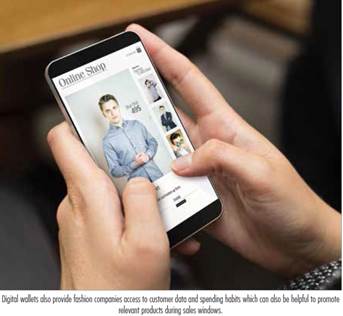
4) The ‘joined -up’ omnichannel customer journey
By establishing an omnichannel approach, and putting the customer in the centre, companies can consistently provide an excellent customer experience at each touchpoint. Ensuring cohesion at each of the touchpoints provides trust and loyalty to the brand. The focus on offering value to the customer journey means that in addition to product offerings one can offer additional offers and advantages no matter which channel is being used. When creating omnichannel customer experiences, companies run into challenges like data silos (where individual departments don’t “share” data with one another), a lack of unified omnichannel customer data, and the need for better personalisation across channels. This could even mean separate purchasing carts which result in an uneven customer experience which can lead to abandonment and dissatisfaction. A fashion retailer needs to analyse the nature and value of products, and trigger personalised offers, which improve customer satisfaction. It also helps to have a simplified payment system and trustworthy delivery.
5) Technology systems can help improve customer satisfaction
For the new e-commerce shopper, one of the big challenges is how e-commerce retailers and brands can make sure that elements such as accurate and detailed product information can be presented in a proper way to include size dimensions, colours and style and special features such as origins and material construction. Companies are turning to advanced technologies to provide solutions this problem:
a) Product information Accuracy
With more shoppers choosing to purchase from retailers that align with their values, personalisation and the act of relevancy are continuing growingtrends throughout the e-commerce industry. To assist this new problem of how to put the customer at the heart of their marketing strategies to provide detailed product data and 360 graphic representation, fashion e-commerce retailers are turning to Product Information Management (PIM) systems. These deliver a consistent product view and customer experience across all touchpoints. Companies such as Sales Layer and Quable are paving the way to become the central hub for all product related information which can eliminate silos and provide a consistent product experience across the omnichannel ecosystem. The big advantage of these systems is that they offer an easy and effective browsing filter system which can assist the online shop interface. Fashion shoppers tend to demand to quickly find the product they want. PIM provides accurate assortment information which can ideally coordinate products from particular categories that address the many features that are being searched for. Similar products can then be found easily so that customers can enjoy the browsing experience. For fashion brands, PIM systems also provide a quick and easy way to manage product information internally to bring products to market faster with all the relevant background information to help customers browse and make buying decisions quickly. Their connections with e-commerce sites and marketplaces allow products to be at the point of sale through seamless data transfer for perfect product promotion.
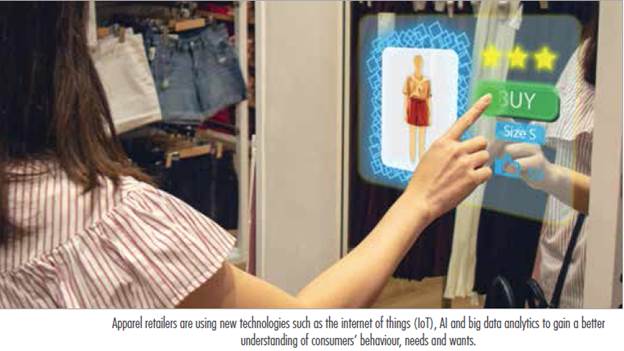
b) Sizing tools
To provide the perfect answer to reduce the returns rate for many fashion companies, the use of sizing tools on their apps has been a great boost to customer satisfaction and as a way to build engagement. Customers can input their own size data to help finalise an online purchase. The more the customer feels able to trust the outcome the more satisfied they are with the brand. One example is Virtusize, a sizing software program used by many brands like Nudie Jeans.
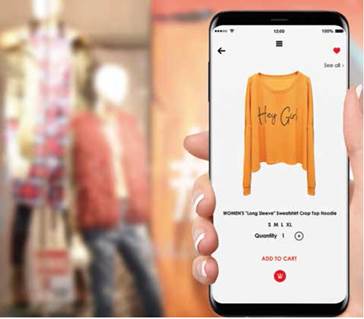
c) Flexible payment systems
There are now additional payment methods available. It is advantageous to accept different types of payment because not every customer has the same preferences. Customers will have a better experience with fashion business, if they are provided flexibility, and they will be eager to come back. Smartphone use has heralded an increase in the growth of contactless payments. Other mobile payment options include Apple Pay, Google Wallet, Samsung Pay, and Android Pay which are easy to use and make the purchasing process more enjoyable. Digital wallets also provide fashion companies access to customer data and spending habits which can also be helpful to promote relevant products during sales windows. ‘Buy now, pay later’ has also become a new growing concept, particularly among Millennials and Generation Z. The younger generation with heavy debt burdens are happy to delay payments. There is also the attraction of checking whether they really love the product before making an upfront payment.
d) Hyper-personalisation
Amazon’s artificial intelligence (AI) product recommendation system is probably the first example of hyper-personalisation that comes to mind for most people. It leverages AI and third-party real-time data sources to enhance brand messaging with relevant, context-sensitive information and make further recommendations based on past purchase or search history. However, not all hyper-personalisation structures are so dependent on the technology. Companies such as Stitch Fix provide information about their style preferences and match a user’s profile with one of its stylists who make hand-picked recommendations for individual users. This means customers get human recommendations from expert stylists for clothes, shoes and accessories – all of which should match their personal styles, and fit perfectly.
e) Fulfillment
Logistics and fulfillment services are the basis for improving customer satisfaction and loyalty in an e-commerce setting and customers expect a similar level of personalisation even during order fulfillment. In e-commerce, it is when the article arrives on the doorstep that the customer could have, for the first time, seen or felt the real article. Hence, before and on delivery, apparel retailers need to provide customers with more than just the product. It is important to develop trust and loyalty towards the brand by also providing memorable experiences with the help of personalised services.
Participation
Although e-commerce fashion stores can’t offer fitting rooms, customers quarantining at home still flocked to their sites to buy clothing. Anyone looking to get involved could turn to platforms like BigCommerce and Shopify, which give independent fashion brands the tools they need to easily set up digital storefronts. The result, however, has led to a serious uptick in competition for these e-commerce fashion stores. They aren’t just competing on price — they’re also competing on stylistic features, as well as how the product makes consumers feel and what the product says to the world about customers wearing it. The major problem for many brands is how to be seen among their many competitors. For smaller brands that are designing by themselves the problem can potentially be worse. They need to have a strong identity and relationship with their customers. It’s vital for brands to establish emotional connection with consumers. Customers will experience something when they wear your clothes, like confidence or comfort. So, customer participation is the key to develop product offering and improve satisfaction and engagement.

1) The rise of direct-to-consumer brands
As there is so much competition in the fashion sector, along with an absence of getting to know brands in an intimate setting, it is up to these companies to offer a different personality to their products through their own e-commerce. As a result, many brands are adopting a direct-to-consumer (D2C) approach to provide personalised and specialised offerings. D2C brands offer unique emotional relationships with their customers where products are designed especially with their customers in mind. D2C fashion brands encourage their customers to generate ideas, content and suggestions for designs as well as to improve customer experience and products. Customers can also spread the word via social media. In the world of fashion, new technologies and the use of social networks are key elements of co-creation. Co-creation involves personalised mass co-production and the co-design processes of specific products and services, resulting in new thinking with a collective approach. As a consequence, apparel retailers are using new technologies such as the internet of things (IoT), AI and big data analytics to gain a better understanding of consumers’ behaviour, needs and wants. This results in customised garment manufacture, which is having a great impact on the fashion industry. It is forcing the industry to niche itself, for instance, by producing individually tailored products and delivering higher value to the customer. So, instead of just buying a branded product, the customers get to buy a product that is tailor-made for them.
2) IoT influencing fashion
IoT is starting to make inroads into the fashion industry. Sensors stitched into the fabric enables data interconnectivity to notify how a customer is using the clothing or what accessories to wear. Tracking activities or monitoring health functions are growing apps that these technologies are bring to fashion to help provide value to customers and to their fashion style.
3) User-generated content
User-generated content proves that customers love the brand and can increase engagement and reach. Its use can be wide ranging from recommendations to videos which when incorporated on social media sites can boost conversions.
4) Use of AR/VR applications for virtual fitting rooms
To address the challenge of averting growing returns and to increase engagement and participation, fashion e-commerce retailers are attempting to retain existing customers, and attract new ones through the use of Augmented Reality (AR) and Virtual Reality (VR) experiences. The use of AR and VR dressing room experiences allow visitors to see themselves in a brand’s clothing, without necessarily needing to visit the store, in a persuasive attempt to buy. Many e-commerce retailers are now using online apps powered by VR, to get more accuracy into how a garment would look or fit. By tapping a button, they would undertake a series of quick questions, provide simple data points, and then be shown the most common body shapes for those unique inputs. Afterwards, they would receive a final recommendation for them. Some are using AR apps that allow people to go behind the scenes and enjoy specialist augmented reality content including live streams of its runway shows and catwalks or provide a variety of AR experiences once scanned with a mobile phone camera. These immersive experiences are becoming an exciting part of the e-commerce customer journey.
Engagement
One of the biggest challenges of e-commerce, particularly in fashion, is how to get consumers engaging with the brand to build trust and drive towards a positive sales outcome. The problem with a website or catalogue of product offerings is that there is no two-way street of feedback, ideas, comments, etc. The new buyer is looking for an exciting buying experience, therefore brands need to look beyond their own product and product quality to attract and retain visitors. Engagement is the key and the problem is how can this be achieved when there are so many competing brands.
1) Use of social media platforms
For many fashion retailers and brands in e-commerce, the growth of social media popularity has been a necessity in today’s smartphone era, particularly among Millennials and Gen Z audiences. Social media does not just help people stay connected, it also allows businesses to promote their offerings, for which sites like Instagram take pride of place. For sites such as Instagram, YouTube, Facebook and Pinterest, to have a more dynamic approach for brands makes the interface much more compelling. Using photos or videos make it easy to get interaction from customers. Engagement can be as low level as a ‘like’, but as stories and compelling visualisations appear social media platforms come into their own. Some are able to be used as a checkout themselves or provide their own search engine for visitors.
2) People love videos
It is well known that people love to watch videos. Placing product videos on particular social media sites like Instagram and Facebook offers the chance to see products in a more exciting environment or location. It is also a great way to inform customers of offers and news. It is also common for influencers to use videos to provide short chats and encourage viewers to exchange information on what types of product or design they are seeking. Videos can also be a great engagement tool particularly in designing new products or accessory being offered. By being spontaneous with engaging content allows customers to further engage with the brand that allows for trust in providing a product specially designed for them.
3) The role of celebrity influencers
The use of influencers in the marketing of fashion brands has long been held as an important part in order to grow engagement. Influencers do play an important role in showing how a product or accessories can be used in a dynamic way through video streaming. Their importance is normally defined by the number of followers they possess at any one time and the target audience demographic they have. By tagging different products that influencers are wearing or have at hand, customers can receive a drop-down of further information about the product or how to add it to the shopping cart. It allows users to engage by sending comments, direct messages or requests for information in a direct communication with the influencer in real-time. The influencer also can share the comments to expand the product reach. However their use has come under scrutiny from some areas as some influencers have bought their follower credentials. Even so they are still deemed an important part of the buyer journey in the discovery phase and conversion process. Their power and reach is something that brands clearly want in order to add personality to their products.
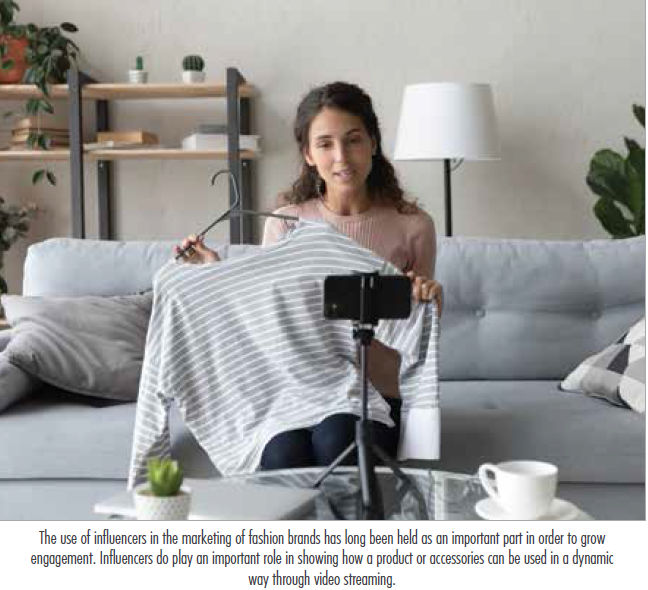
4) AI chatbots
A chatbot in e-commerce can supply that missing link between customer and retailer creating a personalised approach to each user to increase engagement whilst keeping the convenience of online shopping. It can bring exact solutions for the customer. In the case of Tommy Hilfiger, when chatting via their chatbot on Facebook, collections can be browsed, or it can help choose an outfit, style and accessories. At any stage it can add to a fully filled out cart, ready for check out.
5) The rise of v-commerce
As more and more engagement is engineered through virtual assistants or virtual fitting rooms or catwalks using AR or VR, a new term ‘virtual commerce’ (or v-commerce) has come into being. The advantage being that brands can offer a personalised interface with its customers. In this way brands can directly engage and provide customised services or products or even link customers directly through to a buying process or ‘virtual stores’. V-commerce also enables shoppers to buy directly from the retailers online without venturing through other platforms. In what is expected to be a hard year for e-commerce fashion, it seems that many fashion brands and retailers are seeking different routes and limitless ideas on how they can try to address the challenges of satisfaction, engagement and participation. It seems, however, that through offering personalised products, experiences and services, brands and retailers may find the opportunities for success.
This article was first published in the November 2021 edition of the print magazine.







Comments